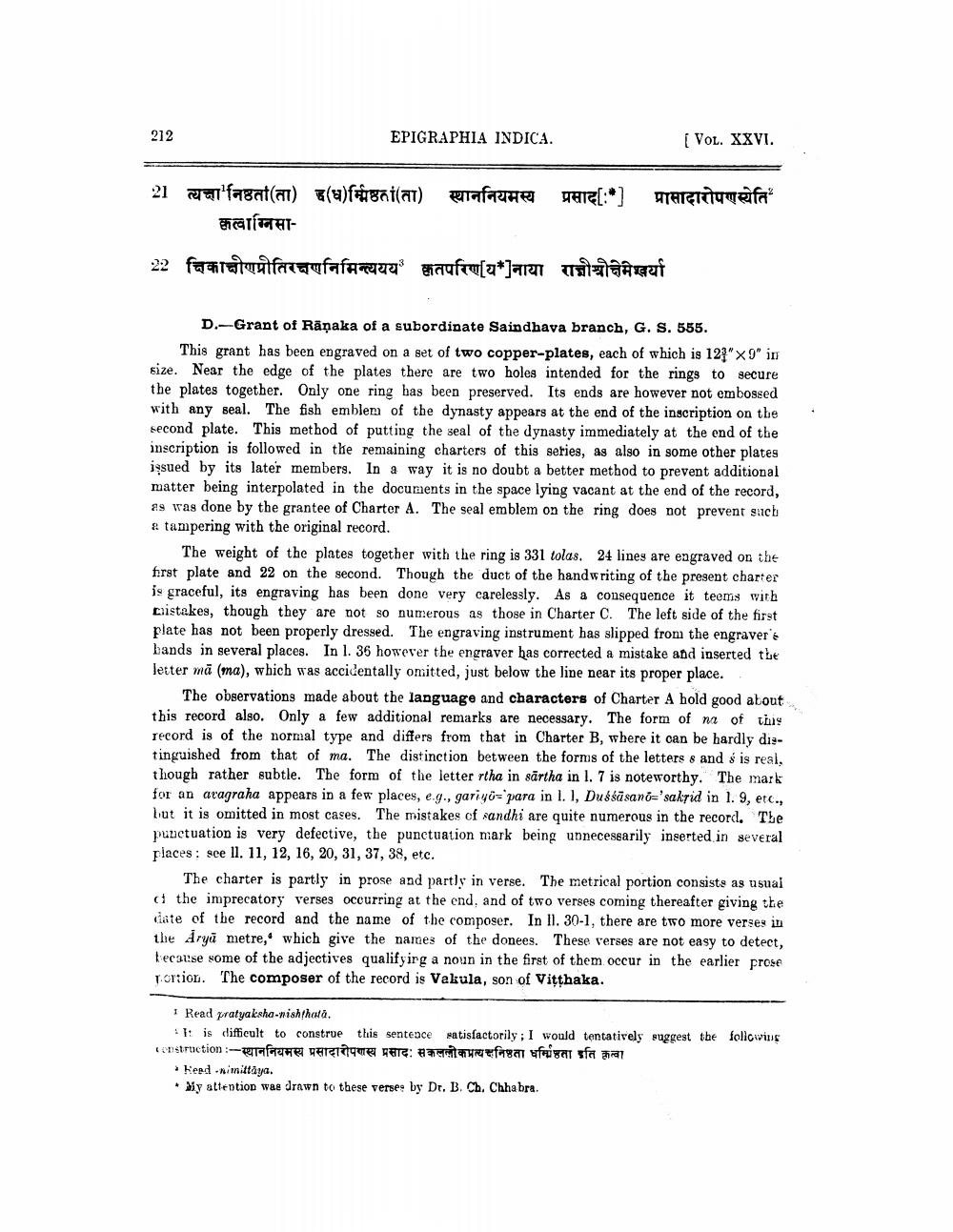________________
212
EPIGRAPHIA INDICA.
(Vol. XXVI.
He[:*)
ATACITUTefa
21 marfagat(a) f(a)f#gai(at) Rafaune
कत्वाग्निसा22 f tualarcafafanuzSaufra[a*]arn
Taaruf
D.-Grant of Rāņaka of a subordinate Saindhava branch, G. S. 555. This grant has been engraved on a set of two copper-plates, each of which is 12" x 9" in size. Near the edge of the plates there are two holes intended for the rings to secure the plates together. Only one ring has been preserved. Its ends are however not embossed with any seal. The fish emblem of the dynasty appears at the end of the inscription on the second plate. This method of putting the seal of the dynasty immediately at the end of the inscription is followed in the remaining charters of this series, as also in some other plates jęsued by its later members. In a way it is no doubt a better method to prevent additional matter being interpolated in the documents in the space lying vacant at the end of the record, 89 was done by the grantee of Charter A. The seal emblem on the ring does not prevent such & tampering with the original record.
The weight of the plates together with the ring is 331 tolas. 24 lines are engraved on the first plate and 22 on the second. Though the duct of the handwriting of the present charter is graceful, its engraving has been done very carelessly. As a consequence it teems with cristakes, though they are not so numerous as those in Charter C. The left side of the first plate has not been properly dressed. The engraving instrument has slipped from the engravere bands in several places. In 1. 36 however the engraver bas corrected a mistake and inserted the letter mā (ma), which was accidentally omitted, just below the line near its proper place.
The observations made about the language and characters of Charter A hold good about this record also. Only a few additional remarks are necessary. The form of ne of the record is of the normal type and differs from that in Charter B, where it can be hardly distinguished from that of ma. The distinction between the forms of the letters 8 and šis real, though rather subtle. The form of the letter tha in särtha in l. 7 is noteworthy. The mark for an aragraha appears in a few places, e.g., gariyo para in l. 1, Duśśāsanā='saksid in l. 9, etc., lut it is omitted in most cases. The mistakes of sandhi are quite numerous in the record. The punctuation is very defective, the punctuation mark being unnecessarily inserted in several places : sce 11. 11, 12, 16, 20, 31, 37, 38, etc.
The charter is partly in prose and partly in verse. The metrical portion consists as usual d the imprecatory verses occurring at the end, and of two verses coming thereafter giving the date of the record and the name of the composer. In 11. 30-1, there are two more verses in the dryā metre, which give the names of the donees. These verses are not easy to detect, because some of the adjectives qualifyirg a noun in the first of them occur in the earlier prose Tortion. The composer of the record is Vakula, son of Vitthaka.
following
1 Read pratyaksha-nishthala.
1: is difficult to construe this sentence satisfactorily: I would tentatively suggest the construction :-emate we were: wefallat fara sfa 1
kead-imittayo. . My attention was drawn to these verse. by Dr. B. Ch. Chhabra.




